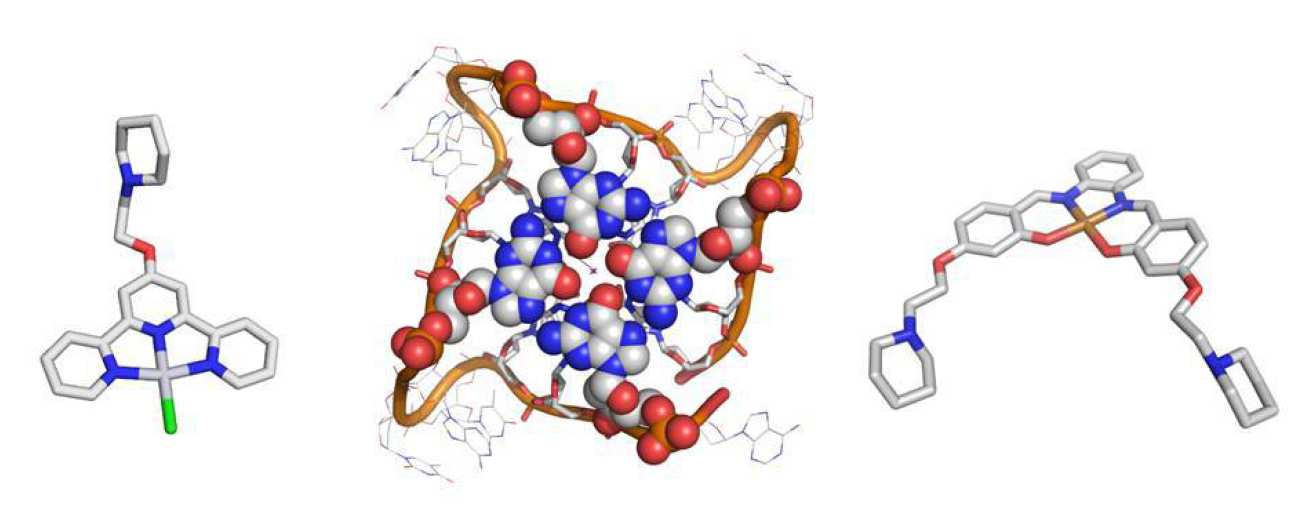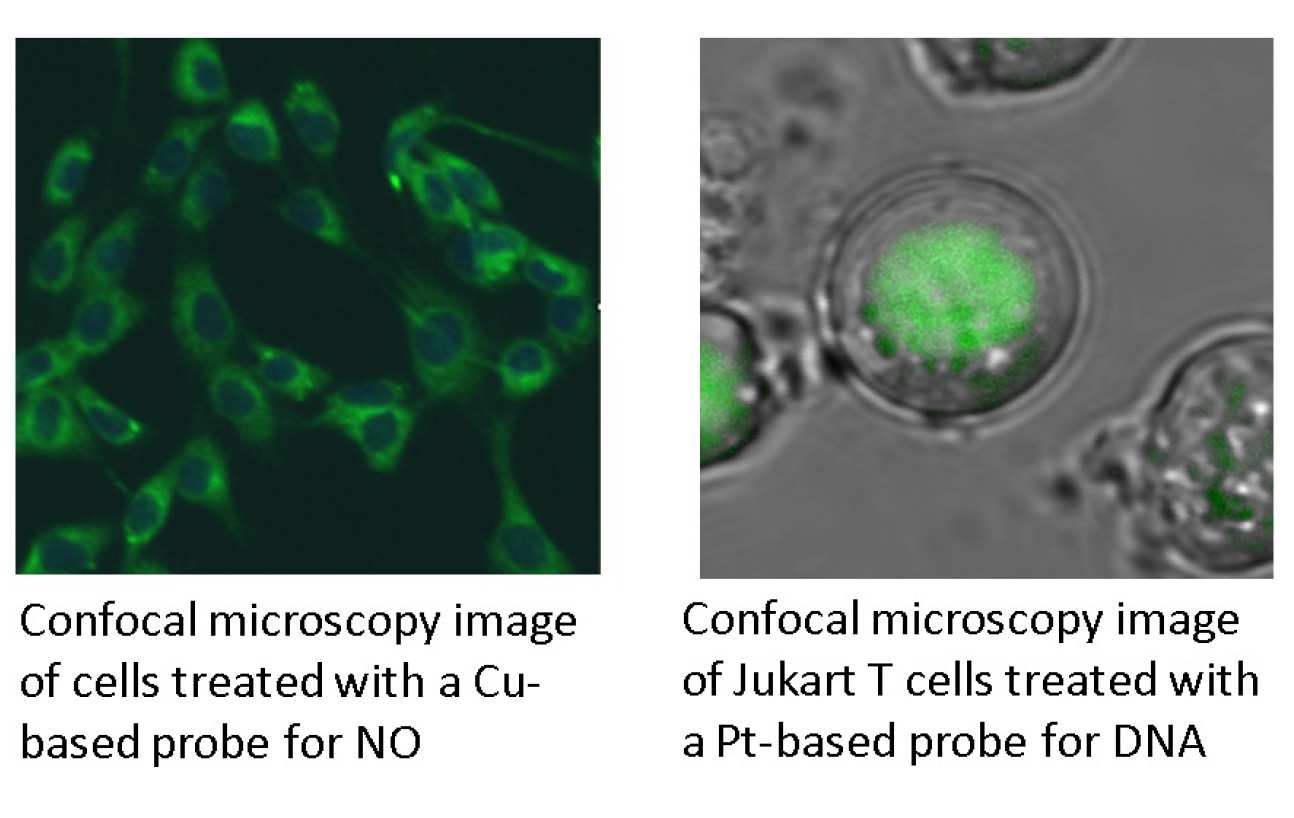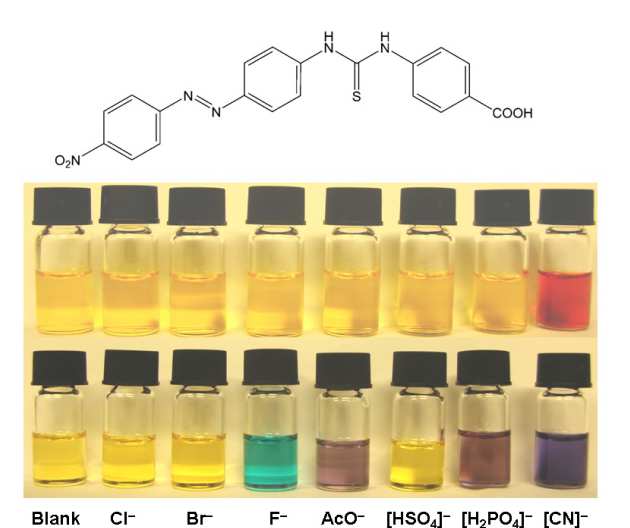Research
The Vilar Group is a very multidisciplinary team of students and postdoctoral associates interested in developing new molecular tools to study biological systems. To this aim, we are active in several broad research areas including synthetic (organic and inorganic) chemistry, spectroscopic and biophysical characterisation, chemical biology and molecular recognition.
Research accordion
Chemical Biology of Nucleic Acids
DNA can adopt different structures besides its canonical right-handed double helix. Some of these structures can be favoured (or templated) by interaction with small molecules (such as metal complexes). We have particular interest in the formation of quadruply-stranded DNA induced by the presence of planar metal complexes. This could have important implications in the development of novel anticancer drugs. Our current interests in this area focus in:
- Development of selective quadruplex DNA binders as potential anticancer drugs
- Metal-based optical probes for DNA (see below)
- Understanding the role quadruplex DNA structures play in gene regulation

Interaction of metal complexes with proteins
Small molecules that inhibit specific enzymes can potentially lead to the development of new drugs as well as probes to gain insight the fundamental understanding of biochemical cellular processes. Most enzyme inhibitors reported to date are based on organic molecules. However, metal complexes have a series of structural and functional features that make them attractive candidates for the development of enzyme inhibitors. Our interest in this area has centred in two main areas: a) the development of vanadium and zinc complexes with the ability to modulate the PTEN/PI 3-kinase/Akt pathway (which is an important regulator of many cellular functions that affect human health and disease such as diabetes, cancer and neurodegenerative diseases); b) development of platinum complexes able to inhibit cyclin dependent kinases (CDKs) - a family of kinases that play key roles in cell cycle regulation.
Development of new probes for molecular imaging
The magnetic and optical properties of metals, combined with the recognition properties of selected organic ligands, are ideal to design sensitive and selective probes for bio-imaging. Based on this approach, we are currently developing probes for Magnetic Resonance Imaging (MRI), Positron Emission Tomography (PET) and Optical Imaging. In the case of MRI, we are interested in the development of responsive contrast agetns (e.g. to the presence of specifc enzymes or analytes).
 Our interest in optical imaging centres in developing probes that can be used in a cellular environment to detect molecules of biological interest such as specific conformations/sequences of nucleic acids, NO, phosphoryalted peptides and lipids.
Our interest in optical imaging centres in developing probes that can be used in a cellular environment to detect molecules of biological interest such as specific conformations/sequences of nucleic acids, NO, phosphoryalted peptides and lipids.
As part of a multidisciplinary project (see "Collaborations") we have an ongoing interest in developing novel methodologies (e.g. metal-based catalyst, microreactors) for the efficient radiolabelling with 11C of molecules of biological or pharmaceutical interest.

Molecular recognition of anionic species
 Our research in this area is centred in developing new chemical receptors (based on metal complexes and/or hydrogen bonding ligands) for the selective recognition of specific analytes.
Our research in this area is centred in developing new chemical receptors (based on metal complexes and/or hydrogen bonding ligands) for the selective recognition of specific analytes.
We have particular interest in using these species for sensing and recognition of anions with important bio-medical roles such as phosphorylated peptides and lipids as well as smaller anions such as chloride, sulfate and pyrophosphate).
We are also interested in the development of chemical receptors for the recogntion of environmentally harmful species such as mercury, arsenate, cyanide.
An example of a colorimetric chemical sensor for cyanide is shown in this figure (upper row shows vials containing the receptor in methanol; lower row in DMSO).


